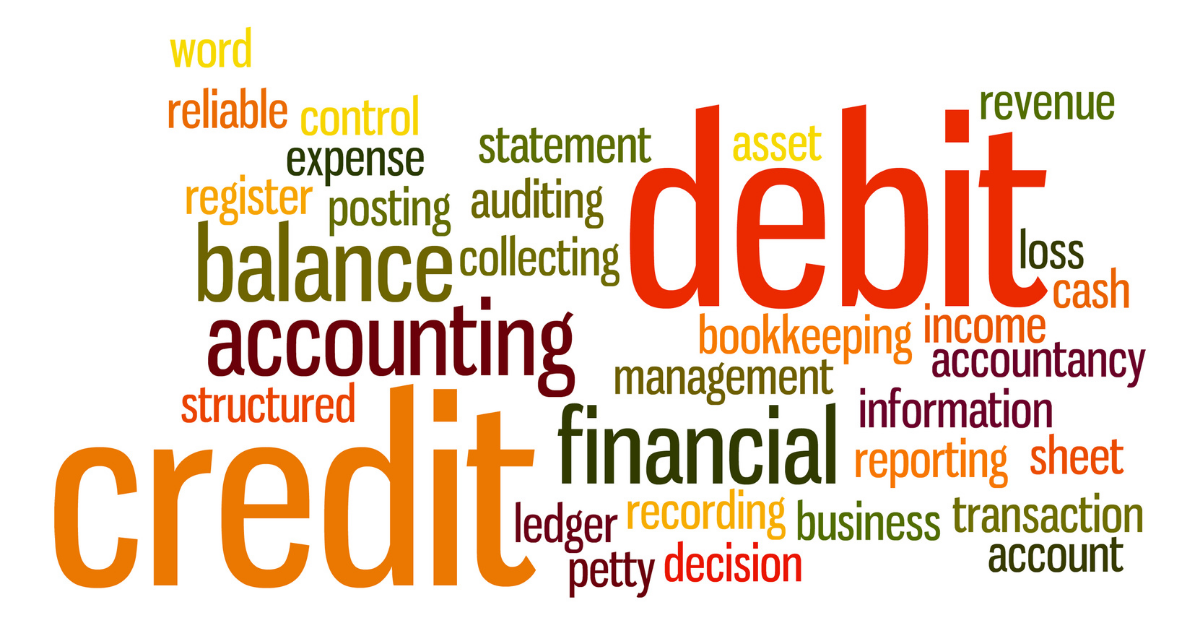A Simple Guide to Debits and Credits
What are debits and credits?
In accounting, debits and credits are ways of recording financial transactions. Transactions are recorded as either a debit or a credit, depending on what is happening in the transaction.
What does debit mean? Debits are typically used to record assets, while credits are typically used to record liabilities. For example, if a company buys a new piece of equipment, the transaction would be recorded as a debit definition to the company asset account and a credit to the company’s cash account.
Credits are also used to record income and expenses. For example, if a company earns revenue from selling products, the transaction would be recorded as a credit to the company’s revenue account and a debit meaning o the company’s cash account.
Why are debits and credits so important to understand?
Debits and credits are essential components of double-entry accounting, used to record financial transactions and create financial statements. Debits and credits are used to keep the books of a business organized and error-free, giving an accurate picture of the company’s financial health. By understanding the rules and principles of debits and credits, business owners can ensure that their books are accurate and up-to-date.
Debits and credits are used to record income and expenses, create financial statements, and inform important decisions such as budgeting and account turnover. Additionally, debit and credit entries are used to balance the books, whether it is creating a budget or tracking accounts receivable. By properly understanding and entering debits and credits, companies can save time and energy while creating a reliable foundation of financial documents.
Ultimately, debits and credits are essential components of accounting and bookkeeping. They are used to create financial statements, track and record income and expenses, and create an accurate and reliable picture of a company’s financial health. By properly understanding and using debits and credits, business owners can save time and energy while better understanding their financial situation.

How to use debits and credits in accounting
In accounting, debits and credits are used to record financial transactions. Transactions are recorded in a ledger using these two methods.
Double-entry bookkeeping is based on the concept of debits and credits. This means that there must be a corresponding debit and credit entry for every transaction.
The purpose of this system is to keep track of both sides of a transaction so that it can be easily verified later on.
Let’s take a closer look at how debits and credits work in accounting.
Step 1: Understand the meaning of debits and credits
In accounting, the terms “debit” and “credit” have distinct meanings and are closely related. A debit increases an asset or expense account and decreases a liability or equity account. Meanwhile, a credit decreases an asset or expense account and increases a liability or equity.
To remember the difference, you can use the acronyms DEAL (Dividends, Expenses, Assets, Losses) and GIRLS (Gains, Income, Revenues, Liabilities, Stockholders’ Equity). This can be visualized using the basic accounting equation of Assets = Equity + Liabilities, which shows that assets are paid for by equity and liability.
Step 2: List the types of debits and credits available
Debits and credits are the two main methods used in accounting for recording financial transactions. Debits indicate a decrease in a liability or an asset, while credits indicate an increase in a liability or asset. Debits and credits can be broken down into four distinct categories:
- Asset debits: Debits to an asset account indicate a decrease in the asset’s value. Examples include purchasing supplies and equipment or decreasing cash due to payment.
- Liability credits: Credits to a liability account indicate an increase in the amount owed by the company. Examples include a loan or a line of credit.
- Equity debits: Debits to an equity account indicate an increase in the company’s ownership. Examples include the issuance of stock or a loan from a shareholder.
- Revenue credits: Is service revenue an asset? Credits to a revenue account indicate an increase in income for the company. Examples include the sale of goods or services.
Step 3: Familiarize yourself with the record-keeping process
The record-keeping process is a way of tracking and recording all business transactions to ensure accuracy and accountability.
This process involves identifying the transaction, analyzing the accounts affected, determining whether the account values are increasing or decreasing, and then debiting or crediting the appropriate accounts. This helps to ensure that all transactions are recorded properly and accounted for in the company’s books. By understanding the basics of debiting and crediting and applying it to the record-keeping process, you can help to ensure accuracy and accountability in your business transactions and accounts.
Step 4: Create a list of daily tasks
You are ever wondered how to keep track of your budget and finances using debits and credits in accounting? This step-by-step guide will show you how to create a list of daily tasks using debits and credits to help you stay organized and save money.
First, learn the basics of debits and credits: A debit is when you add an expense to an account, while a credit is when you add an asset to an account.
Next, familiarize yourself with the journal entry format. Each transaction must be entered in a specific format in the accounting books. Debit entries are always listed first in the journal entry, and credit entries are listed second.
Once you’ve mastered the basics, you can create a list of daily tasks to help you stay organized:
- Look through invoices and bank statements to ensure all transactions are properly documented.
- Record any new transactions in the accounting books.
- Check the balance of your accounts and reconcile any discrepancies.
- Create an invoice for any outstanding payments.
- Enter any payments received into the accounting books.
- Update accounts receivable and accounts payable balances.
- Review financial statements and make any necessary adjustments.
- Create a cash flow projection to plan future spending.
By following these steps and creating a list of daily tasks, you’ll be able to keep a close eye on your finances and ensure all your transactions are properly recorded. Schedule a free consultation with a QuickBooks expert today to get started!
Step 5: Set up a system for recording debits and credits correctly
You must first understand double-entry bookkeeping to set up a system for recording debits and credits correctly. This requires separating transactions into accounts, such as assets, expenses, liabilities, equity, and revenue. With debits and credits, each account is affected differently.
To set up the balance sheet, all debit accounts should be on the left, and all credit accounts should be on the right. For example, if ABC Company has $5000 cash, $7000 inventory, $3000 capital stock, and $9000 surplus, the balance sheet should be set up accordingly.
Next, you must set up the ledgers for each account. A general ledger records debits and credits for a particular account. For each account, the debit balance should be on the left and the credit balance on the right.
By properly setting up a system for recording debits and credits, you will be able to create accurate financial statements and other documents that may be necessary for sharing with banks, accountants, the IRS, or an auditor.
Step 6: Use accounting software to keep track of your finances
If you’re running a business using accounting software, keeping track of your finances is important. This will help you stay organized and avoid mistakes.
When it comes to debits and credits, you can use accounting software to keep track of all your transactions. This way, you’ll always know where your money is going and how much you have in each account.
Step 7: Monitor your progress with accounting lessons
Monitoring accounting lessons are essential to understanding debits and credits and how to use them effectively in accounting. Using various learning tools, such as visual tutorials, practice quizzes, flashcards, cheat sheets, and quick tests, one can gain the necessary knowledge to accurately enter and track various financial transactions using the double-entry accounting system.
With the help of these learning tools, one can gain a deeper understanding of the principles of debits and credits and learn how to use them to gain insights into a company’s financial health. Furthermore, earning a Certificate of Achievement in Debits and Credits can provide additional recognition of one’s knowledge and skill in this subject.

Tips on how to correctly use debits and credits in your financial transactions
Most people think that debits and credits are confusing. In reality, they’re not that difficult to understand. Here are a few debits and credits cheat sheet on how to correctly use them in your financial transactions:
Always check your accounts
It is extremely important to check your accounts every once in a while, as the accuracy of financial information and accounting ratios greatly depend on properly entering debits and credits. For example, if the total amount of debits does not equal the total amount of credits in a transaction, the accounting transaction will be considered unbalanced. The accounting software will not accept it.
Understand the basics of debits and credits
Debits and credits are the two sides of a financial transaction that must be equal in value. Debits record a decrease in assets or an increase in liabilities and equity, while credits record an increase in assets or ensuring equity.
In double-entry bookkeeping, every financial transaction affects at least two accounts. It must be equal in value—meaning that the total amount of debits must equal the total amount of credits. This concept is essential to understanding the overall financial health of a business, as it serves as the foundation for the general ledger and all financial reports.
Knowing the basic rules of debits and credits in accounting can help business owners keep track of their financials and ensure accuracy in their books.
Check your accounts for accuracy
Checking your accounts regularly can help you understand how to use debits and credits correctly. By being familiar with your assets, liabilities, revenues and expenses, you can easily identify which accounts need a debit or credit to be added to them.
It will allow you to correctly enter the debits and credits into the accounting software and ensure the total amount of debits equals the total amount of credits, resulting in a properly balanced transaction. Regularly checking your accounts can help you understand the financial statements and create an accurate business budget.
Use the single-entry method
The single-entry method can help with debits and credits by providing a simplified way of recording transactions. As only one entry is made per transaction, errors are less likely to occur. Additionally, it allows for a more immediate financial picture to be seen.
Since the income statement is usually updated only once a year with single-entry accounting, it gives a static view of the company’s financial status. This can help provide a more accurate and up-to-date view of the company’s finances, allowing for more informed decision-making.
Make sure you account for all transactions
To correctly use debits and credits in your financial transactions, you must ensure that you account for all transactions. This includes both income and expenses. For each transaction, you will need to determine whether it is a debit or credit. You can then use this information to record the transaction in your books correctly.
Know how each account works
Financial accounts are used to track and record financial transactions. They are categorized into six main accounts: assets, liabilities, shareholders’ equity, revenue, expenses, and dividends. Each type of account has its characteristics and rules for how a debit or credit is applied.
Take advantage of accounts that already exist
When using debits and credits, it is important to take advantage of existing accounts. To do this, first, identify which accounts are normally associated with a debit (left column) or credit (right column) balance. Expenses, assets, and dividends normally have debit balances, while liabilities, revenues, and equity normally have credit balances.
Next, when a debit is added to an account that normally has a debit balance, this will increase the amount in the account. On the other hand, a credit will decrease the amount in the account. Conversely, when a credit is added to an account that normally has a credit balance, this will increase the amount, and a debit will decrease the amount in the account.
Finally, when recording transactions, be sure to categorize them based on the type of account properly. For example, deposits should be recorded as a debit in an asset account, while withdrawals should be recorded as a credit in the same account. Credits should also increase liability, equity, and revenue accounts, while debits should decrease asset and expense accounts.
By following these steps and properly taking advantage of accounts that already exist when using debits and credits, you can easily and accurately record your business’s transactions.
Keep a record of your transactions
Keeping a record of your transactions can help you use debits and credits correctly by ensuring that all transactions and events are captured and recorded accurately and have the appropriate controls in place. This can be done with the help of source documents, such as invoices, bank deposit receipts, cash register tapes, and time reports, which can support the entries into the accounts.
Double-entry bookkeeping requires recording both debits and credits; thus, by tracking these transactions and events, you can ensure that the appropriate accounts are credited and debited for the correct amounts, leaving no transactions or events unaccounted for. This ensures that your accounts are balanced and that your business practices are accurate.
Make the most of memorization techniques
Using memorization techniques can be beneficial when understanding and working with debits and credits. This is because memorizing the principles of debits and credits can help ensure accuracy and save time when using Quickbooks or other accounting software.
Check your accounts for consistency
You should review your transactions page to check your accounts for consistency. Make sure that all deposits (green transactions) are recorded as debits in your accounts and that all withdrawals (black transactions) are recorded as credits. Then, you should review each account to ensure that the total amount of debits matches the total amount of credits.
Accounts that normally contain a debit balance (assets, expenses and dividends) should increase when a debit is added to them and decrease when a credit is added to them.
Accounts that normally contain a credit balance (liabilities, revenues and equity) should increase when credit is added to them and decrease when a debit is added to them. Finally, you should ensure that the total amount of debits and credits in all your accounts are equal. If the totals are unequal, the accounting transaction is unbalanced and should not be accepted.

FAQs
Here are some of the most frequently asked questions about debits and credits:
Does debit always mean an increase?
Debits and credits (abbreviated “dr” and “cr”) are unique accounting tools used to describe the change in a particular account that is caused by a transaction. A debit entry on the left side of an account will result in an increase in asset and expense accounts and a decrease in liability, equity, and revenue accounts. On the other hand, a credit entry on the right side of an account will generally result in a decrease in asset and expense accounts and an increase in liability, equity, and revenue accounts. Therefore, the answer to the question “Does debit always mean an increase?” is generally “No,” as it depends on the account in which the debit is entered.
What’s a good interest rate for loans?
Loan interest rates can vary widely, depending on the type of loan and the lender. Generally, it’s best to aim for a loan interest rate of 3-7%, although it could be higher or lower depending on your credit score and other factors. Before taking out a loan, comparing offers from different lenders is important and ensuring you’re getting a good interest rate. It’s also important to evaluate the terms of the loan and ensure it’s the right one for your needs.
How are accounts affected by debit and credit?
Debits and credits are used to track the financial transactions of an account and are essential for keeping a business organized. To understand how debits and credits impact accounts, it is important to know the rules that govern this type of accounting.
Debits generally occur when money is added to an account, while credits happen when money is subtracted. Depending on the type of account, this can have different effects. For example, asset, expense, liability, equity, and income accounts normally contain debit balances. This means that when a debit is added, the amount will increase and decrease when credit is added to them.
How do you record debit and credit in your books?
- Step 1: Understand the accounts in which the transactions will be recorded. Common accounts include assets, expenses, liabilities, equity and revenue.
- Step 2: Have a grasp of how debits and credits work. Accurate bookkeeping can give you a better understanding of your business’s financial health.
- Step 3: Separate your transactions into accounts. Record two or more entries for every transaction. This is considered double-entry bookkeeping.
- Step 4: For every financial transaction made by a business firm that uses double-entry accounting, a debit and credit must be recorded in equal but opposite amounts.
- Step 5: Use T-accounts to learn how to record debits and credits. The information from the T-accounts is then transferred to make the accounting journal entry.
- Step 6: Record each transaction in your small business accounting books. Enter the amount in one account as a debit (left side) and another as a credit (right side of the account).
- Step 7: Understand which account will have the debit entry and which account will have the credit entry. Use a reference chart to help guide you through the process.
- Step 8: Double-check your records to ensure accuracy. Make sure all debits and credits are balanced and equal.
- How to File for Bankruptcy on Credit Cards: The Complete Guide to Bankruptcy and Credit Card Debt - October 25, 2023
- What is loan principal and how does it work? - September 24, 2022
- Building Your Business: Separating Your Personal and Business Finances - March 2, 2022







